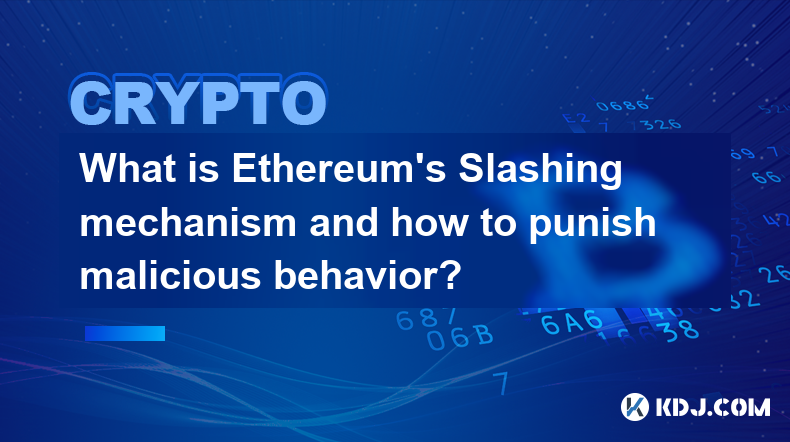-
 Bitcoin
Bitcoin $96,967.1185
-0.97% -
 Ethereum
Ethereum $2,671.8672
-2.29% -
 XRP
XRP $2.5695
-4.76% -
 Tether USDt
Tether USDt $1.0002
0.01% -
 BNB
BNB $645.6047
-1.25% -
 Solana
Solana $171.2167
-1.05% -
 USDC
USDC $1.0000
0.01% -
 Dogecoin
Dogecoin $0.2462
-2.20% -
 Cardano
Cardano $0.7733
-3.19% -
 TRON
TRON $0.2391
-2.12% -
 Chainlink
Chainlink $17.7376
-2.28% -
 Sui
Sui $3.3727
-1.65% -
 Avalanche
Avalanche $24.6569
-0.32% -
 Stellar
Stellar $0.3296
-5.06% -
 Litecoin
Litecoin $130.0046
2.52% -
 Toncoin
Toncoin $3.6504
1.46% -
 Shiba Inu
Shiba Inu $0.0...01532
-0.97% -
 UNUS SED LEO
UNUS SED LEO $9.6755
-0.52% -
 Hedera
Hedera $0.2125
-2.94% -
 Hyperliquid
Hyperliquid $24.8232
0.91% -
 Polkadot
Polkadot $5.1674
3.43% -
 MANTRA
MANTRA $7.5034
-0.01% -
 Bitcoin Cash
Bitcoin Cash $320.8281
-0.64% -
 Ethena USDe
Ethena USDe $0.9978
-0.18% -
 Bitget Token
Bitget Token $4.7462
4.95% -
 Uniswap
Uniswap $8.9431
-4.59% -
 Dai
Dai $0.9997
-0.07% -
 Monero
Monero $228.7110
-0.47% -
 NEAR Protocol
NEAR Protocol $3.3985
0.84% -
 Pepe
Pepe $0.0...09371
-0.86%
how to buy bitcoin ledger
By following these steps and implementing the recommended safety measures, individuals can securely acquire Bitcoin using a Ledger Nano hardware wallet and store their cryptocurrency offline for enhanced protection.
Feb 01, 2025 at 08:13 pm

How to Buy Bitcoin on a Ledger
Key Points:
- A guide for purchasing Bitcoin using a Ledger Nano hardware wallet
- Detailed instructions for setting up Ledger, connecting it to a trading platform, and exchanging fiat currency for Bitcoin
- Safety measures and tips to ensure a secure transaction process
Steps:
1. Create a Ledger Account
- Purchase a Ledger Nano hardware wallet and follow the setup instructions.
- Install the Ledger Live mobile or desktop application.
- Choose "Create New Account" and select "Bitcoin (BTC)" as your cryptocurrency.
2. Configure Ledger Security
- Set a strong PIN code to protect your Ledger device and its contents.
- Write down your recovery phrase and store it in a safe place - these 24 words are essential for recovering your wallet if necessary.
- Enable passphrases for added security.
3. Choose an Exchange Platform
- Research various cryptocurrency exchanges to find one that suits your needs.
- Consider factors such as fees, security, and trading volume.
- Some reputable exchanges include Coinbase, Binance, and Kraken.
4. Link Ledger to Exchange
- Open an account on the chosen exchange platform.
- Navigate to "Deposit" or "Add Funds" and select "Crypto."
- Choose Bitcoin (BTC) and enter the Bitcoin receive address displayed on your Ledger screen.
- Approve the connection on both the exchange and Ledger device.
5. Deposit Funds
- Determine the amount of Bitcoin you wish to purchase.
- Follow the exchange's instructions for depositing fiat currency (e.g., bank transfer, credit/debit card).
- Confirm the deposit by verifying the balance on the exchange and in your Ledger wallet.
6. Buy Bitcoin
- Navigate to the "Buy/Sell" page on the exchange platform.
- Select "Bitcoin (BTC)" as the desired cryptocurrency.
- Enter the amount you wish to buy or specify the specific value of Bitcoin you want.
- Review the transaction details and confirm the purchase.
7. Transfer Bitcoin to Ledger
- Once the Bitcoin purchase is complete, navigate to the "Transfer" or "Withdraw" page on the exchange platform.
- Input the Bitcoin withdrawal address displayed on your Ledger screen.
- Specify the amount to withdraw and confirm the transaction.
- The Bitcoin will be securely stored in your Ledger wallet.
8. Safeguard Your Bitcoin
- Regularly update the Ledger Live application to ensure security patches and bug fixes.
- Keep your Ledger device and PIN secure from theft or unauthorized access.
- Store your recovery phrase in a safe and accessible location.
FAQs:
Q: Why should I use a Ledger to buy Bitcoin?
A: Using a hardware wallet like Ledger enhances the security of your Bitcoin holdings by storing them offline, away from potential online threats.
Q: Can I use other hardware wallets besides Ledger?
A: Yes, there are other reputable hardware wallet brands such as Trezor and SafePal. However, this guide specifically addresses buying Bitcoin using Ledger.
Q: Is it safe to store a large amount of Bitcoin on a Ledger?
A: Storing a large amount of Bitcoin on a hardware wallet is generally considered safe. Ledger employs advanced encryption and security measures to protect your funds.
Q: Can I sell Bitcoin stored on a Ledger?
A: Yes, you can sell Bitcoin held on your Ledger wallet by connecting it to an exchange, selecting the desired amount, and initiating a sell order. The proceeds will be deposited into your exchange account.
Disclaimer:info@kdj.com
The information provided is not trading advice. kdj.com does not assume any responsibility for any investments made based on the information provided in this article. Cryptocurrencies are highly volatile and it is highly recommended that you invest with caution after thorough research!
If you believe that the content used on this website infringes your copyright, please contact us immediately (info@kdj.com) and we will delete it promptly.
- Why Solana (SOL) Price Surged 4% Today? Will SOL Rally or Crash Next?
- 2025-02-22 02:35:24
- FBI Director Kash Patel Holds $115,000 in Bitcoin, as BTC Bull Token (BTCBULL) Takes Off
- 2025-02-22 02:35:24
- Cambridge Coins business targeted twice in 24 hours by thieves with tens of thousands pounds worth of stock stolen
- 2025-02-22 02:35:24
- Coinbase Wins Lawsuit Against SEC, Paving the Way for Clear Crypto Regulations in the US
- 2025-02-22 02:35:24
- Pi Coin: A Potential Game-Changer in the Cryptocurrency Market?
- 2025-02-22 02:35:24
- Meme Coins: A Cautionary Tale of Richness and Busts
- 2025-02-22 02:35:24
Related knowledge

What is Ethereum’s Slashing mechanism and how to punish malicious behavior?
Feb 20,2025 at 03:08am
Key PointsOverview of slashingDifferent types of slashing in EthereumIncentives and consequences of slashingIdentifying and reporting slashed validatorsOngoing discussions and potential improvementsEthereum's Slashing Mechanism: Punishing Malicious BehaviorEthereum's slashing mechanism is an essential tool for ensuring network security and punishing mal...

What is the verifier node of Ethereum and how to become a verifier?
Feb 19,2025 at 06:00pm
The Verifier Node of Ethereum: A Comprehensive GuideKey Points:What is a Verifier Node?How to Become a Verifier NodeResponsibilities and Rewards of a Verifier NodeMinimum Requirements for Becoming a Verifier NodePotential Difficulties in Running a Verifier Node1. What is a Verifier Node?A Verifier Node is an independent entity on the Ethereum network th...

What is Ethereum’s staking, and how to participate and earn money?
Feb 19,2025 at 04:37pm
Key Points:Understanding Ethereum's Staking MechanismSteps to Participate in StakingBenefits and Rewards of StakingSecurity and Risk ConsiderationsTechnical Requirements and Hardware OptionsPotential Challenges and Troubleshooting TipsFAQs on Ethereum StakingWhat is Ethereum's Staking?Proof-of-Stake (PoS) is a consensus mechanism used in blockchain netw...

What is Ethereum’s DAO (Decentralized Autonomous Organization) and how does it work?
Feb 20,2025 at 03:12am
Key PointsDefinition and Structure of a DAOGovernance and Decision-Making in DAOsBenefits and Use Cases of DAOsChallenges and Limitations of DAOsWhat is Ethereum's DAO (Decentralized Autonomous Organization) and How Does It Work?Definition and Structure of a DAOA Decentralized Autonomous Organization (DAO) is an innovative governance and management fram...

What is Ethereum's multi-signature wallet and how to improve security?
Feb 20,2025 at 02:18pm
Key Points:Understanding the Concept of a Multi-Signature WalletBenefits and Drawbacks of Multisig WalletsRequirements for Setting Up a Multisig WalletStep-by-Step Guide to Generating a Multisig WalletImplementing Strategies for Enhanced Security1. Understanding the Concept of a Multi-Signature WalletA multi-signature (multisig) wallet in the Ethereum e...

What is Ethereum's oracle and how to provide data for smart contracts?
Feb 21,2025 at 01:30am
Key Points:Understanding the concept of oracles in EthereumExploring different types of oraclesDetailed guide on how to provide data for smart contractsAddressing potential challenges and considerationsWhat is Ethereum's Oracle?Oracles are crucial components in the Ethereum ecosystem, enabling smart contracts to access real-world data and off-chain even...

What is Ethereum’s Slashing mechanism and how to punish malicious behavior?
Feb 20,2025 at 03:08am
Key PointsOverview of slashingDifferent types of slashing in EthereumIncentives and consequences of slashingIdentifying and reporting slashed validatorsOngoing discussions and potential improvementsEthereum's Slashing Mechanism: Punishing Malicious BehaviorEthereum's slashing mechanism is an essential tool for ensuring network security and punishing mal...

What is the verifier node of Ethereum and how to become a verifier?
Feb 19,2025 at 06:00pm
The Verifier Node of Ethereum: A Comprehensive GuideKey Points:What is a Verifier Node?How to Become a Verifier NodeResponsibilities and Rewards of a Verifier NodeMinimum Requirements for Becoming a Verifier NodePotential Difficulties in Running a Verifier Node1. What is a Verifier Node?A Verifier Node is an independent entity on the Ethereum network th...

What is Ethereum’s staking, and how to participate and earn money?
Feb 19,2025 at 04:37pm
Key Points:Understanding Ethereum's Staking MechanismSteps to Participate in StakingBenefits and Rewards of StakingSecurity and Risk ConsiderationsTechnical Requirements and Hardware OptionsPotential Challenges and Troubleshooting TipsFAQs on Ethereum StakingWhat is Ethereum's Staking?Proof-of-Stake (PoS) is a consensus mechanism used in blockchain netw...

What is Ethereum’s DAO (Decentralized Autonomous Organization) and how does it work?
Feb 20,2025 at 03:12am
Key PointsDefinition and Structure of a DAOGovernance and Decision-Making in DAOsBenefits and Use Cases of DAOsChallenges and Limitations of DAOsWhat is Ethereum's DAO (Decentralized Autonomous Organization) and How Does It Work?Definition and Structure of a DAOA Decentralized Autonomous Organization (DAO) is an innovative governance and management fram...

What is Ethereum's multi-signature wallet and how to improve security?
Feb 20,2025 at 02:18pm
Key Points:Understanding the Concept of a Multi-Signature WalletBenefits and Drawbacks of Multisig WalletsRequirements for Setting Up a Multisig WalletStep-by-Step Guide to Generating a Multisig WalletImplementing Strategies for Enhanced Security1. Understanding the Concept of a Multi-Signature WalletA multi-signature (multisig) wallet in the Ethereum e...

What is Ethereum's oracle and how to provide data for smart contracts?
Feb 21,2025 at 01:30am
Key Points:Understanding the concept of oracles in EthereumExploring different types of oraclesDetailed guide on how to provide data for smart contractsAddressing potential challenges and considerationsWhat is Ethereum's Oracle?Oracles are crucial components in the Ethereum ecosystem, enabling smart contracts to access real-world data and off-chain even...
See all articles





















































































